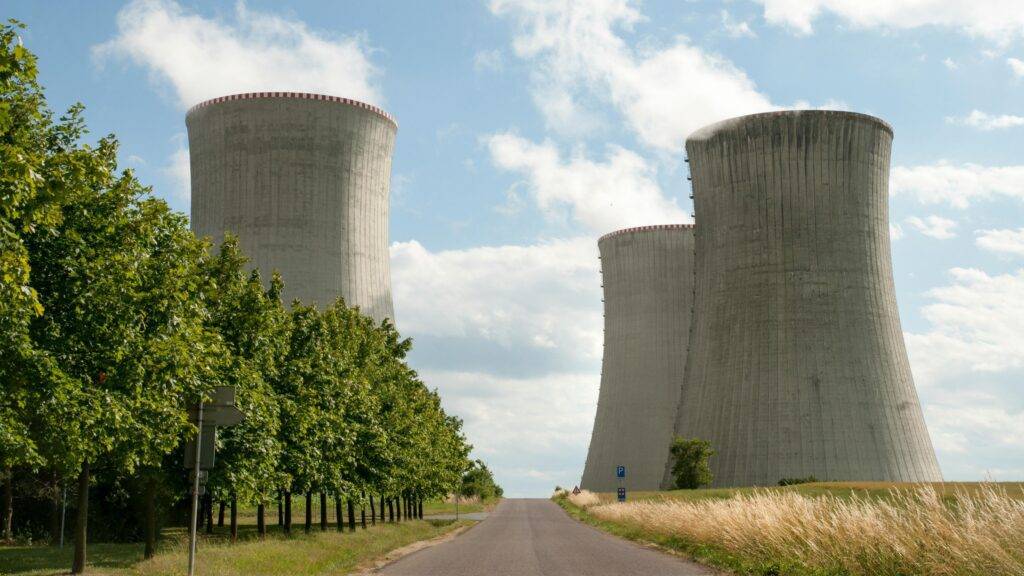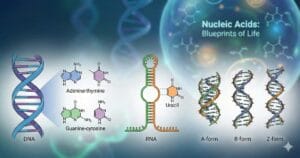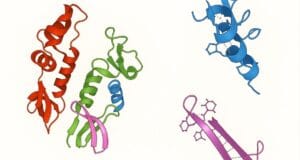
COMPETITIVE EXAM MCQs SERIES of ENVIRONMENTAL SCIENCE for UGC-NET/JRF, SLET, ARS, GATE, and other entrance tests – Energy and Environment – Nuclear Reactors and Environmental Harmony.
Syllabus Outline
- Basic principles and types of nuclear reactions.
- Reactor components and their functions.
- Reactor Operation (e.g. Nuclear fuel cycle, Reactor startup, shutdown, and maintenance procedures).
- Safety systems and protocols in nuclear reactors.
- Radioactive waste management (e.g. classification, characterization, treatment, and disposal).
- Radiation effects on human health and ecosystems.
- Environmental risks associated with nuclear accidents.
This quiz contains the concept-based most frequently asked 25 MCQs of “Energy and Environment – Nuclear Reactors and Environmental Harmony“. Each question has a single correct/most appropriate answer.
*****
1. How is the energy released during a nuclear reaction?
a) Converting chemical energy into heat energy
b) Converting protons into neutrons
c) Converting mechanical energy into nuclear energy
d) Converting mass into energy
2. What is the primary concern regarding accidental releases from nuclear reactors?
a) Short-term health effects
b) Economic costs of cleanup
c) Long-term environmental impacts
d) Public perception of safety
3. Which nuclear reactor is most efficient for fuel utilization and waste production?
a) Fast Breeder Reactor
b) Pressurized Water Reactor
c) Advanced Gas-cooled Reactor
d) Boiling Water Reactor
4. Which of the following reactor types is commonly used for naval propulsion systems?
a) Gas-cooled reactor
b) Pressurized water reactor
c) Liquid metal-cooled reactor
d) Molten salt reactor
5. What is the primary purpose of a nuclear reactor’s containment building?
a) To house control systems
b) To regulate the reactor’s temperature
c) To store nuclear fuel
d) To prevent the release of radioactive materials in case of accidents
6. Which group is more radio-resistant compared to higher plants and animals?
a) Viruses
b) Fungi
c) Protozoa
d) Bacteria
7. How do criticality accidents in nuclear facilities differ from reactor core damage incidents?
a) Criticality accidents involve higher radiation doses
b) Criticality accidents result in widespread environmental dispersion
c) Reactor core damage incidents lead to longer-lasting contamination
d) Reactor core damage incidents have more severe health impacts
8. What is the primary reason for the decreased radio sensitivity from the egg to the adult stage?
a) Environmental factors
b) Relative development of tissues
c) Genetic mutations
d) Increased exposure
9. Which of the following nuclear reactor types is considered inherently safer due to its passive safety features?
a) Advanced Gas-cooled Reactor
b) Molten Salt Reactor
c) Pressurized Water Reactor
d) Boiling Water Reactor
10. What is the primary advantage of using molten salt as both coolant and fuel carrier in a molten salt reactor?
a) It enhances the reactor’s heat transfer efficiency
b) It allows for continuous refuelling
c) It has a high neutron absorption cross-section
d) It reduces the risk of radiation leakage
11. Assertion (A): Emergency releases of radionuclides during severe nuclear accidents pose a significant public health concern.
Reasoning (R): These releases can lead to widespread environmental contamination and long-term health effects.
a) Both A and R are true, and R is the correct explanation of A.
b) Both A and R are true, but R is the incorrect explanation of A.
c) A is false, but R is true.
d) A is true, but R is false.
12. Which type of nuclear reactor uses graphite as a moderator and carbon dioxide as a coolant?
a) Liquid Metal Fast Breeder Reactor
b) Pressurized Heavy Water Reactor
c) Boiling Water Reactor
d) High-temperature gas-cooled Reactor
13. Which is a characteristic of a pebble bed reactor?
a) It utilizes helium as a moderator
b) It uses liquid sodium as a coolant
c) It operates at low temperatures
d) It features fuel elements coated with ceramic materials
14. What is the primary advantage of using liquid sodium as a coolant in fast breeder reactors?
a) Low-cost
b) Abundance in nature
c) Environmental friendliness
d) High thermal conductivity
15. What is the primary function of a reflector in a nuclear reactor?
a) To increase the reactor’s power output
b) To shield the reactor from external radiation
c) To absorb excess neutrons
d) To slow down fast neutrons
16. What is the primary disadvantage of using liquid sodium as a coolant in fast breeder reactors?
a) Limited availability of sodium
b) Reactivity with water and air
c) Low heat transfer efficiency
d) High cost of production
17. Which of the following nuclear reactor designs is known for its ability to utilize thorium as fuel?
a) Boiling Water Reactor
b) Molten Salt Reactor
c) Pressurized Water Reactor
d) Sodium-cooled Fast Reactor
18. In the context of nuclear reactor accidents, what distinguishes the Chernobyl accident from other reactor incidents?
a) Release of long-lived radionuclides
b) Extensive damage to aquatic ecosystems
c) Global dispersion of radioactive plume
d) Severe contamination of soil and vegetation
19. What is the main advantage of a breeder reactor?
a) It operates at lower temperatures compared to conventional reactors
b) It produces more fissile material than it consumes
c) It requires less maintenance
d) It produces less radioactive waste
20. Which nuclear reactor design operates at high temperatures and uses liquid sodium as a coolant?
a) Pressurized Heavy Water Reactor
b) Fast Breeder Reactor
c) Molten Salt Reactor
d) Advanced Gas-cooled Reactor
21. What is the primary challenge associated with decommissioning of ageing nuclear reactors?
a) Disposal of high-level radioactive waste
b) Finding alternative energy sources
c) Ensuring reactor safety during dismantling
d) Managing public perception and opposition
22. What is the primary activity that starts the nuclear fuel cycle?
a) Waste disposal
b) Mining and milling of uranium ore
c) Fuel fabrication
d) Enrichment
23. What is the primary advantage of using thorium-based nuclear reactors over uranium-based ones?
a) Thorium is more abundant in nature
b) Thorium reactors have higher energy efficiency
c) Thorium reactors produce less radioactive waste
d) Thorium reactors are cheaper to construct
24. Which of the following is a potential environmental concern associated with nuclear reactors?
a) Soil erosion
b) Radioactive waste disposal
c) Greenhouse gas emissions
d) Air pollution
25. Which of the following reactor types has the highest fuel utilization efficiency?
a) Pressurized Water Reactor
b) Boiling Water Reactor
c) Advanced Gas-cooled Reactor
d) Breeder reactor
*****
Previous: Nuclear Fission and Fusion Energy
Next: Biomass and Bioenergy
References
- Bodansky, David. (2008) Nuclear Energy: Principles, Practices, and Prospects. Springer, 2nd Edition.
- Glasstone, Samuel, and Sesonske, Alexander. (2004) Nuclear Reactor Engineering: Reactor Design Basics. Springer, 4th Edition.
- Ferguson, Charles D., and Podvig, Pavel. (2011) Nuclear Energy: What Everyone Needs to Know. Oxford University Press, 1st Edition.

